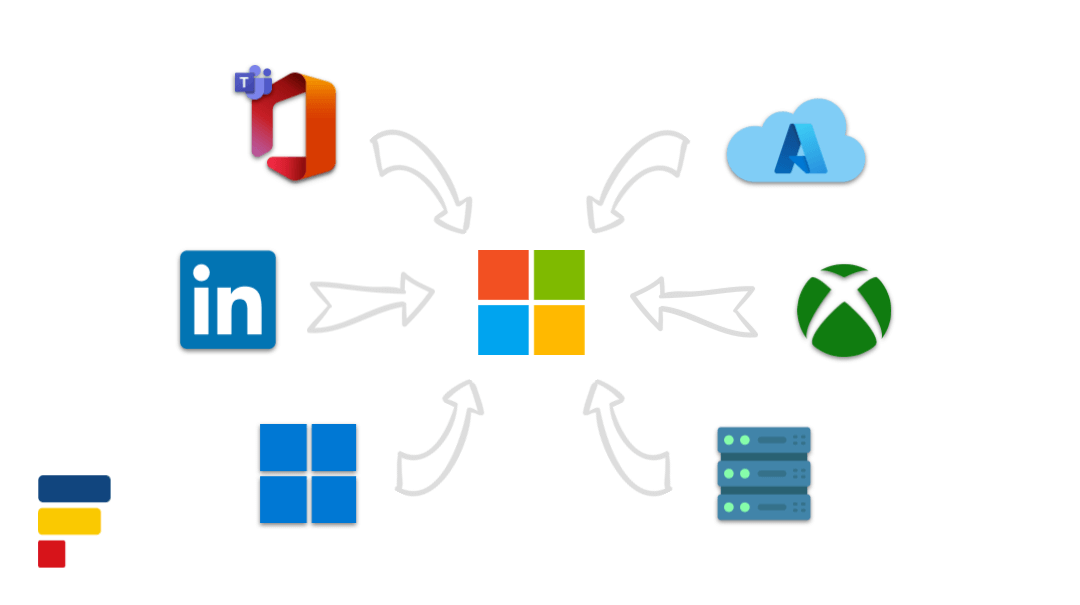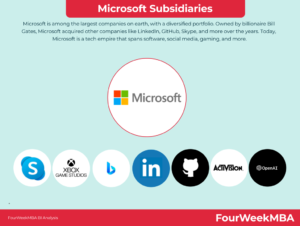Microsoft’s Proprietary Models: Building the Future of AI
Introduction
In recent years, Microsoft has emerged as one of the central players in the artificial intelligence revolution. While much of the public conversation often focuses on OpenAI, Anthropic, Google DeepMind, or Meta’s LLaMA, Microsoft has steadily developed its own proprietary AI models to complement its partnerships. These models are not just experimental—they are actively integrated into Office 365, Windows, GitHub Copilot, Azure AI services, and enterprise platforms that millions rely on daily.
But what exactly are Microsoft’s proprietary models? How do they differ from open-source offerings? And why has Microsoft chosen a dual strategy of supporting both its own models and OpenAI’s GPT models?
This article takes a deep dive into Microsoft’s closed-source AI ecosystem, examining the technology, strategy, applications, and implications of these models in a world that’s moving towards increasingly powerful AI.
Microsoft’s Dual AI Strategy: OpenAI + Proprietary Models
One of the most interesting aspects of Microsoft’s approach is that it hasn’t placed all its bets on one strategy. Instead, it follows a two-pronged approach:
-
Partnership with OpenAI – Microsoft is OpenAI’s largest investor and the exclusive cloud provider for its models like GPT-4, GPT-4o, and DALL·E.
-
Development of proprietary models – Microsoft is simultaneously building its own family of large language models (LLMs), small language models (SLMs), and domain-specific AI systems under its Azure AI and Copilot umbrella.
This combination gives Microsoft a strategic advantage. It can:
-
Offer exclusive access to OpenAI’s leading models via Azure.
-
Develop customized, domain-specific models for enterprise clients.
-
Maintain independence by not relying 100% on a single external provider.
What Are Microsoft’s Proprietary Models?
Microsoft’s proprietary models are a suite of closed-source AI systems built in-house to power enterprise applications, cloud services, and consumer-facing tools. Unlike open-source frameworks such as Meta’s LLaMA or Mistral’s models, Microsoft keeps these models closed and integrated tightly with Azure’s infrastructure.
Some notable proprietary initiatives include:
1. Phi Family (Small Language Models)
-
Designed to be lightweight, efficient, and cost-effective.
-
Focused on edge deployment and enterprise scenarios where latency and cost matter more than raw size.
-
Competes with smaller models like Google’s Gemini Nano or Anthropic’s lightweight Claude versions.
2. Copilot-Specific Models
-
Tailor-made LLMs powering Microsoft’s Copilot across Word, Excel, PowerPoint, Outlook, and Windows.
-
Optimized for productivity tasks: summarizing emails, writing reports, generating presentations, and analyzing data.
-
These models often work in hybrid setups—blending OpenAI’s GPT engines with Microsoft’s in-house systems.
3. Security and Compliance Models
-
Proprietary AI systems designed for cybersecurity (Microsoft Defender), fraud detection, and compliance automation.
-
Prioritize trust, data privacy, and regional compliance (e.g., GDPR, HIPAA).
4. Domain-Specific Azure AI Models
-
Models trained for translation, speech-to-text, code generation, and business analytics.
-
Often customized for industries such as healthcare, finance, retail, and government.
Why Proprietary Models Matter to Microsoft
The rise of open-source AI has made many question the relevance of closed models. However, Microsoft continues to invest heavily in proprietary AI for several reasons:
1. Control Over Data and Security
Enterprises using Microsoft services demand high security and compliance guarantees. Proprietary models give Microsoft full control over how data is processed and protected.
2. Product Integration
Microsoft owns an ecosystem spanning Windows, Office 365, Azure, GitHub, LinkedIn, and Dynamics 365. Proprietary AI ensures seamless integration and optimization for these platforms.
3. Competitive Differentiation
By owning both the infrastructure (Azure) and the intelligence (proprietary AI models), Microsoft creates a moat against competitors like Google Cloud, AWS, and IBM.
4. Efficiency and Cost Savings
Proprietary small models like Phi can run cheaper than massive LLMs. This helps Microsoft optimize Copilot’s cost structure for millions of users.
Key Applications of Microsoft’s Proprietary AI
Microsoft’s proprietary models are not abstract research projects—they are deeply embedded in practical applications that shape everyday work.
1. Microsoft 365 Copilot
-
Uses a blend of GPT and proprietary models to enhance productivity apps.
-
Generates presentations, drafts reports, analyzes spreadsheets, and manages workflows.
-
Proprietary models are optimized for enterprise context-awareness (e.g., knowing company policies, formatting rules, and document structures).
2. Windows Copilot
-
Acts as an AI assistant inside Windows, helping with system-level tasks.
-
Uses lightweight proprietary models for local processing and faster execution.
3. Azure AI Services
-
Provides businesses with API access to Microsoft’s proprietary vision, speech, and decision-making models.
-
Customizable for industry-specific applications.
4. GitHub Copilot X
-
Though initially powered by OpenAI Codex, Microsoft has been experimenting with proprietary coding models fine-tuned on enterprise repositories.
5. Microsoft Security AI
-
Proprietary AI integrated into Microsoft Defender and Sentinel.
-
Detects threats, anomalies, and fraud with real-time AI-driven monitoring.
Proprietary Models vs. Open-Source AI: Microsoft’s Position
The AI community is sharply divided between open-source advocates and proprietary model supporters. Microsoft sits firmly in the latter camp, though with a hybrid touch.
Advantages of Proprietary Models:
-
Security & Compliance: Enterprise-grade trust.
-
Tight Integration: Built directly into Microsoft’s ecosystem.
-
Scalability: Optimized for millions of users simultaneously.
Disadvantages:
-
Lack of Transparency: Researchers cannot inspect or audit the models.
-
Vendor Lock-In: Customers relying on proprietary Microsoft AI risk being locked into its ecosystem.
-
Slower Innovation Sharing: Unlike open-source, innovation happens behind closed doors.
Microsoft’s bet is that enterprises will prioritize security, compliance, and reliability over openness.
Microsoft’s Research & Development in AI Models
Microsoft Research has a long history of pioneering AI. Many breakthroughs in speech recognition, reinforcement learning, and natural language processing came from its labs. Today, its R&D focuses on:
-
Multimodal AI (text, image, video, speech).
-
Reasoning-first models that can perform logical problem-solving.
-
Small language models optimized for efficiency.
-
Responsible AI frameworks embedded into every proprietary model.
Competition: Where Microsoft Stands
Microsoft’s proprietary models exist in a landscape of fierce competition.
-
Google DeepMind & Gemini – Strong focus on reasoning and multimodal AI.
-
Anthropic Claude – Known for alignment and safety-first approaches.
-
Meta LLaMA – Driving the open-source AI movement.
-
Amazon AWS Bedrock – Provides infrastructure but relies on third-party models.
Microsoft’s strength lies in combining proprietary models with OpenAI’s GPT, Azure’s dominance, and Office’s ubiquity. This synergy positions it as a leader in enterprise-ready AI.
Ethical and Regulatory Considerations
Proprietary AI is not without challenges. Microsoft faces questions around:
-
Bias and fairness – Are its models trained responsibly?
-
Transparency – Should enterprises trust closed systems without knowing their inner workings?
-
Regulation – As the EU AI Act and US AI regulations emerge, proprietary models will face auditability requirements.
Microsoft has responded with its Responsible AI Standard, embedding fairness, transparency, and accountability into its AI lifecycle.
The Future of Microsoft’s Proprietary Models
Looking ahead, Microsoft’s proprietary AI strategy will likely evolve in three key directions:
-
Deeper Productivity Integration – Copilot will become the default digital assistant across all Microsoft apps.
-
Hybrid AI Architectures – Proprietary models will work alongside local edge models and OpenAI’s GPT engines.
-
Industry-Specific Models – Tailored AI for healthcare, finance, education, and government will drive adoption.
Conclusion
Microsoft’s proprietary models represent a quiet but powerful pillar of its AI empire. While much attention goes to OpenAI and competitors, Microsoft is building a closed-source AI ecosystem deeply embedded in the tools people and businesses already use every day.
By balancing control, security, and integration, Microsoft positions its proprietary models as the backbone of enterprise AI adoption in the coming years. Whether this strategy will outlast the open-source wave remains to be seen, but one thing is clear: Microsoft is not just a partner in the AI race—it’s running its own race with its proprietary models.
For quick updates, follow our whatsapp channel – https://whatsapp.com/channel/0029VbAabEC11ulGy0ZwRi3j
https://bitsofall.com/https-yourblog-com-baidus-ernie-x1-1-reasoning-first-model/
https://bitsofall.com/oracle-openai-partnership-reshaping-ai-infrastructure/
Intensified Competition Among Major Tech Companies: What It Means for the Future of Tech






